Sony Xperia Z2 vs Apple iPhone 5s
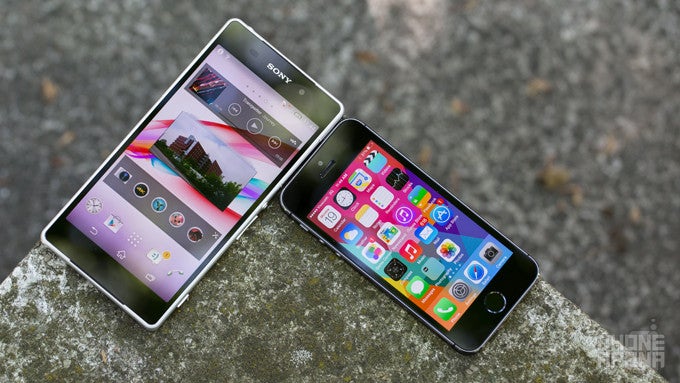
Introduction
Sony's flagship refresh in the Xperia Z2 entered the scene just recently, offering a level of refinement that exceeds the company's previous efforts. The Z2 is more polished, powerful, and feature-full than ever. Obviously, however, the competition is not about to sit idle, and will have refined offerings of their own.
When we say competition, at least in the context of the Z2, however, we usually think Android. It would be wrong, however, to exclude Apple's iPhone 5s from the race, especially given how it continues to sell by the thousands daily. Indeed, the iPhone 5s is an unlikely competitor for those looking for the larger form-factor of the Xperia Z2 and the likes of it, but that's not necessarily true for your Average Joe, who's simply looking for the phone that he likes best.
Let's see what each of our contestants today have to offer, and where their strengths and weaknesses lie.
Design
It isn't often that we get to handle an Android device that rivals the iPhone 5s' design and feel. The Sony Xperia Z2 is the glass-and-metal-bodied exception to that rule.
It's not often that we have a phone in our hands that can successfully spar with Apple's iPhone 5s in terms of design, but the Sony Xperia Z2 sure is an exception. Its rectangular, glass-and-metal build doesn't just look stylish and premium – it actually feels that way in your hand. But the slightly thinner (7.6 vs 8.2 mm) iPhone 5s is that and more – its industrial design has an edge over the Z2 when it comes to pure aesthetics, as it's not as cluttered with flaps, buttons, and openings. Indeed, the aluminum shell of the 5s feels less encumbered in comparison, but, then again, it comes without the Z2's water- and dust-resistance.
At the sides, we have a shutter key, followed by a volume rocker and the home button on the Xperia Z2's right, but only that last one proves clicky enough for liking. The rest are a little sticky, and provide unsatisfying tactile feedback. The iPhone 5s does things a bit differently – it's relatively low height allows it to stick the home button on the top right side, while the two volume keys and the mute slider occupy the left side. This time around, we have a far more refined, clicky movement of the keys, and they definitely communicate a higher-end experience.
Display
Sony took a big step forward with the IPS display of the Xperia Z2, but the iPhone 5's panel still outclasses it.
With the Xperia Z2, Sony finally caved in and made the switch to from TFT LCD to the superior IPS tech. The effect is telling: the Xperia Z2's 5.2-inch, 1080 x 1920 screen (424 ppi) screen offers livelier colors than before (Z1) and viewing angles are finally good enough. The screen has a very good color temperature of 6909 K (6500 K is the reference point here), meaning that whites and the differing intensities of gray are rendered without an overpowering blue tinge. Gamma, at 2.59, is less optimal, and peak brightness is alright at 458 nits. Overall, the Z2 has a fairly accurate color reproduction, though both primary and secondary colors are over-saturated, and especially red and green.
Looking at the much smaller, 4-inch (640 x 1136, 326 ppi) IPS screen of the iPhone 5s, we have to admit that it still outclasses the Z2's panel. Color temperature is less optimal at 7144 K, but gamma (2.21) is excellent and maximum brightness is in another league, at 587 nits. When it comes to color reproduction, as seen from our measurement charts below, the iPhone 5s has the considerably more accurate colors. They deviate minimally from their targets, and saturation is excellent and very natural.
Of course, it does come down to size in the end. The iPhone 5s may very well have an edge in terms of quality, but the Xperia Z2 does offer the more captivating experience.
Interface and functionality
Sony's light touch, seen with its customized Android operating system, is very welcome, especially next to the very simplified approach of iOS 7.
Sony's Xperia Z2 comes with a skinned version of the latest Android 4.4.2 KitKat update on-board. We generally appreciate Sony's approach to customizing the core Android experience, as it has a light touch, and doesn't overdo it with overlays or pointless functionality. What's more, it is one of the most uniform take on Android, and the same design language flows through out apps, menus, and other UI elements. It goes without saying that the iOS 7.1.1 version on the iPhone 5s is an altogether different operating system, but we're still surprised at how close the two have gotten in terms of simplicity, if that's what you're looking for. That said, iOS still leaves little room for your input, and this quality of the software has generated tons of hate, and tons of love.
The first group will dig the Z2's software, as it's it got quite a bit going on. By default, the homescreen is littered with widgets with app recommendations, music, search, and the weather, though all of that can be made to disappear in a few seconds if you like a cleaner look. Themes can be changed, and entire homescreens can be re-arranged to your liking. In contrast, the iPhone 5s comes with no widget support, and its homescreen is entirely filled with apps. Thankfully, iOS 7 did introduce some extra functionality like the Control Center, which has a number of quick toggles and essential settings available with a simple swipe from the bottom to top. Sony's answer to that is Android's notification and status panel, which holds your incoming notifications and a number of quick toggles that can be customized to your liking.
The Z2's bigger display proves quite useful when it comes to typing on the keyboard, as buttons are larger and easier to accurately hit. Both designs are very simplistic (though you can customize Sony's keyboard, or change it altogether), and actually look very much alike.
In the end, it's an impossible task to tell which software we like more, as they both have a different view of the world. If you want more choice, then Android is the undisputed king. But if you just want a phone that is simplified down to the basics, then iOS is the right pick.
Processor and memory
We're talking zero compromises here. Both devices are absolute powerhouses when it comes to pushing even the heaviest of code.
The Sony Xperia Z2 is outfitted with industry-leading components in the performance department. It's got a very powerful, quad-core Qualcomm Snapdragon 801 chip with four Krait 400 cores and an Adreno 420 GPU. There are also 3 gigs of RAM available, along with 16GB of internal storage, expandable through a microSD card.
In comparison, the iPhone 5s' configuration appears modest on paper. It's got a 1.3GHz, dual-core A7 64-bit processor with a very potent PowerVR G6430 GPU and 1GB of RAM. In terms of storage, we have 16GB of space, and no expansion is possible.
Now, in terms of real life performance, this isn't as clear-cut as the above specifications might lead you to believe. Both devices actually offer a very speedy user experience, and even the heaviest games we could think of didn't slow them down. If anything, we felt like the iPhone 5s' interface was just a tad more uniform in its responsiveness, as we have come across stutters when using the Z2.
Internet and connectivity
The iPhone 5s has a tiny edge in terms of web load speeds, but the Xperia Z2 is by far the more connectivity-rich device of the two.
Chrome is the only browser the Xperia Z2 has to offer out of the box, and you won't hear us complain. The tried and tested client works wonders on such powerful hardware – page load times are wholesome and navigating even image-based websites is done without a hitch. These observations are also confirmed by synthetic benchmarks, on which the Z2 scores excellently.
But, when talking benchmarks and general browser performance, the iPhone 5s' Safari client is a necessary part of the conversation. The difference is pretty hard to catch, but the 5s does render pages a teensy bit faster.
In terms of connectivity options, the iPhone 5s is no match however – the Xperia Z2 is just chock-full with features. Sure, both boast Cat 4 LTE (up to 150Mbit/s downlink) and HSPA+, along with Bluetooth 4.0 and A-GPS with GLONASS support, but the Z2 also has extras like NFC, and 5GHz Wi-Fi.
Camera
The caveats here are many and varied, making it hard to produce a clear winner.
Sony has packed an impressively-large, 1/2.3'' Exmor RS sensor with 20.7 million, 1.1-micron pixels in the Xperia Z2. The unit has wide f/2.0, 27 mm G Lens, which allows for an abundance of light to enter the sensor. In comparison, Apple has nestled a smaller, 1/3'' sensor with 8 million, 1.5-micron pixels in the iPhone 5s. The 5s has a comparatively narrower, f/2.2 lens with 31 mm focal length.
As for the camera interface, we're quite satisfied with both. That said, the Xperia Z2 offers users a wide berth as far as manual controls go, whereas the iPhone is much more straightforward, but also more limited in this regard. This functional edge is also apparent when talking shooting modes – both have panorama, but the Xperia Z2 has perks like Background Defocus (which creates a fake bokeh effect), Info Shot (attempts to generate useful information about an object), and Social Live, which allows you to stream live video directly to Facebook.
So far, it's safe to say that the Xperia Z2 offers the more impressive configuration and feature set. However, this doesn't necessarily mean it produces the better shots, and the two do operate on a level playing field, especially if you consider the way Sony's default Superior Auto shooting mode operates. Namely, the software resizes snaps down to 8 megapixels, while the outstanding resolution is used to enhance stills and also allow for lossless zooming. When put next to each other, however, the two phones produce very comparable 8-megapixel images, though they're not without their caveats.
For starters, exposure is consistently set correctly with both phones, and the margin of error has been very low in our experience. In terms of color reproduction, both devices can be said to churn out life-like snaps, though the Z2 does over-saturate colors in comparison. On the other hand, Sony's handset does manage to capture finer, more defined detail (but sometimes exhibiting tiny visual artifacts) in a fair number of scenarios – a likely result of its more aggressive sharpening. Apple's flagship produces softer-looking snaps in comparison.
Indoors, when lightning is strong, or at least medium, the iPhone 5s' produces the more attractive shots, with punchier (albeit a tad overstated) colors. In comparison, the Z2 churns out shots that are noticeably noisier and exhibit small artifacts visible when you zoom in. When lights go down, however, or when you have to shoot in complete darkness, the iPhone 5s falters. It produces overly warm snaps that look thoroughly yellow, unlike the Z2, which keeps its cool.
Both units have their respective trade-offs when it comes to video capture, too. The Sony Xperia Z2 produces much darker, less appealing, 1080p clips in comparison to the iPhone 5s', but manages to much better reproduce any given scene in terms of sound. The difference is quite noticeable, too, as the iPhone 5s produces audio that sounds muffled next to the rich audio the Z2 captures. Both phones can also shoot super-smooth, 120 frames per second slow-mo clips at 720p resolution.
Multimedia
We tend to like Sony's Xperia Z2 more as far as media consumption goes.
As far as media consumption on-the-go, the Xperia Z2 proves the more capable device of the two, no small thanks to that beautiful and large display. Watching video on the 5.2-inch, 1080p screen of the Z2 is a pleasure, and happens to be one area where the iPhone 5s is simply outclassed.
Looking at audio reproduction, however, the Xperia Z2's two front-facing stereo speakers are a bit disappointing. The output is a bit low on volume compared with the iPhone 5s' mono speaker on the bottom, even with the company's proprietary xLOUD on. In fact, even with ClearAudio+ on (enhances sound quality), we've gotta give it to the iPhone 5s – it reproduces audio that is clearer and comparatively bass-y.
In terms of the software behind multimedia apps, however, we tend to like Sony's approach. The Walkman music player app found with the Z2 has a very attractive design, and offers perks like lyrics, artist information, and its own, customizable equalizer. The iPhone 5s, on the other hand, does come with a music player with Apple's iTunes Radio built-in (alike to the Pandora app), and feature a more simplified interface. This functional edge in the Z2's favor extends to the Video player and Gallery apps, as well.
Call quality
An easy win for the iPhone 5s' excellent earpiece and microphone. Sony has some catching up to do here.
We were not impressed with the Xperia Z2 during our call tests. Its earpiece churns out high and unrealistic voices, devoid of lower frequencies, while the microphone is only slightly better, capturing a bigger chunk of a voice's full richness. Thankfully, both components deliver acceptable volume levels.
In contrast, the iPhone 5s aces this part of the test. It delivers rich-sounding, natural voices through its earpiece and microphone both. In terms of loudness, the two again perform well, and have a very decent volume punch, so both sides understand what's being said without straining themselves.
Battery life
Double the capacity of the iPhone 5s' battery doesn't mean the Z2 is twice as enduring, but the advantage is clear to anybody.
The 3200 mAh cell packed into the Sony Xperia Z2 appears giant next to the 1570 mAh battery of the iPhone 5s. As you can imagine, this translates into a very noticeable superiority for the Z2 in terms of battery life. So, whereas the iPhone 5s struggles to get through the day with serious usage, the Z2 actually manages to hold its ground for at least a day and a half. Moderate usage will give you a day with the iPhone 5s, two with the Xperia Z2.
The situation is similar with call and standby time on a 3G network. Sony's flagship is rated good for up to 19 hours of talk and almost 31 days of waiting, while Cupertino's handset manages only 10 hours / 10 days, respectively.
Conclusion
So there you have them – the relative strengths and weaknesses of the Sony Xperia Z2 and the Apple iPhone 5s.
The iPhone 5s' aluminum design remains something of a benchmark, though it would be wrong to say that the Xperia Z2 isn't very close. The iPhone has the more accurate screen, but the one on the Xperia Z2 doesn't disappoint either, and is significantly larger at 5.2''. Of course, this comes at a price – Sony's flagship is less pocket-friendly and not as easy to use with a single hand.
In terms of imaging, we have a pretty consistent stalemate, though there's a certain back-and-forth. For example, the iPhone 5s produces slightly more accurate, less-saturated snaps in daylight overall, but falters when it comes to low-light photography. That said, we do like the 5s' video samples more, though sound reproduction is not on par with the Z2.
Lastly, the Xperia Z2 does offer much better battery longevity, and that's a big plus for anyone considering Sony's flagship, especially in this day and age.
Overall, and we're again going back to this, picking either of this should prove a relatively simple affair as long as you know the type of form factor you're looking at. Looking for a large, captivating screen to watch movies, browse, and game on? Easy then, pick the Xperia Z2. Looking for a non size-crazed device that does everything just as flawlessly? Then go for the iPhone 5s.
Follow us on Google News
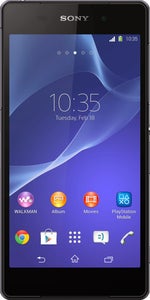
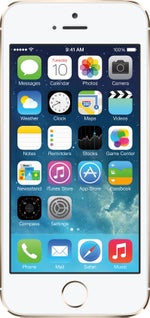









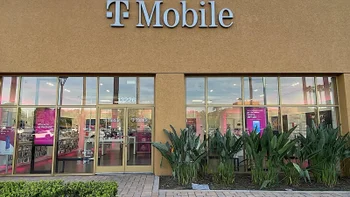

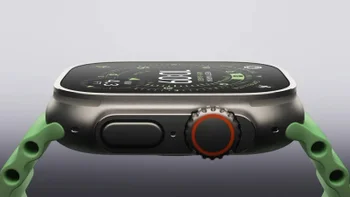

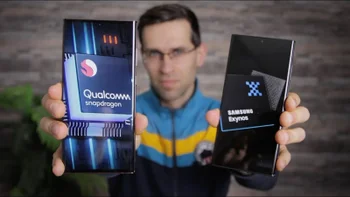

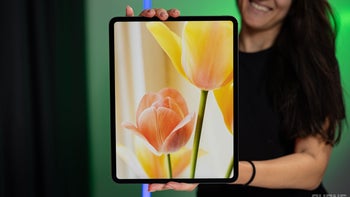

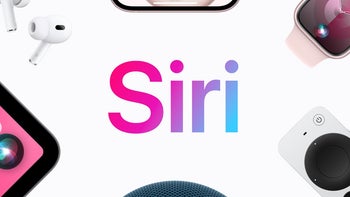
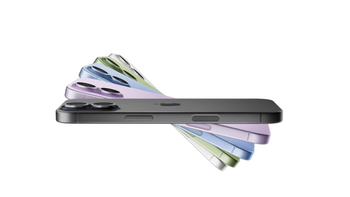
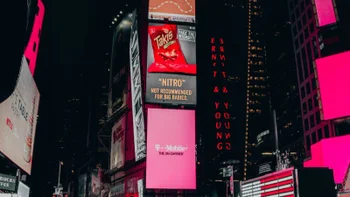
Things that are NOT allowed:
To help keep our community safe and free from spam, we apply temporary limits to newly created accounts: